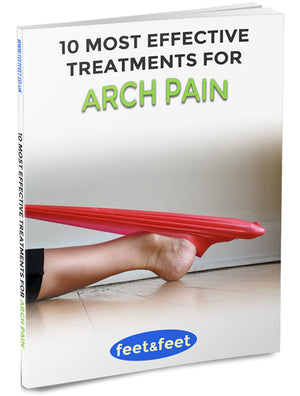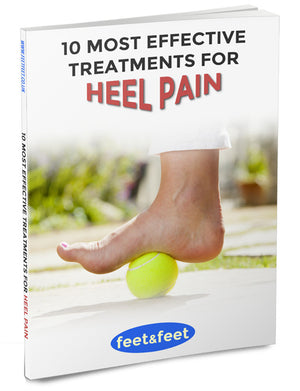10 Best Overpronation Exercises

Pronation is an important aspect of foot movement while standing, walking or running. It refers to the way your foot rolls when it touches the ground and is necessary for even weight distribution and shock absorption as you walk.
However, this movement may be exaggerated in certain groups of people, such as pregnant women, runners and obese people, causing overpronation as a result.
In overpronation, there’s the excessive inward rolling of your foot, causing the arch of your foot to flatten and interfere with normal weight distribution. This predisposes you to pain, injuries and foot conditions such as Achilles tendonitis or plantar fasciitis.
Overpronation can easily be treated conservatively with simple exercises. Here are our 10 best overpronation exercises your podiatrist or physical therapist may recommend.
1. Heel Raises
The first place to start in correcting overpronation is building strength in the calves, feet, and ankles. An effective way to build this strength is by exercising the calf muscles, foot and ankle for strengthening and improving stability.
To do this exercise, you need to:
- Stand up straight with your hip-width apart.
- Slowly lift your heels off the floor (hold onto a chair or rail for stability if necessary).
- As you lift your heels, ensure you’re pushing against the balls of your feet, then, hold the position for some seconds.
- Repeat the procedure 10 to 15 times with a few seconds of rest in-between.
You can also perform heel raises on a step platform to stretch and strengthen a wider range of muscles.
2. Towel Scrunches
Towel scrunches are another excellent exercise for overpronated feet; they help strengthen the muscles in the toes. Also, towel crunches help strengthen the arch of the foot, provide stability for better walking alignment and increase flexibility.
- Start by sitting down on a chair with your feet flat on the floor and a towel in front of you.
- Use your toes to scrunch the towel towards you and release it.
- Do it again for 10 to 15 times.
3. Toe Tapping
The anterior tibialis helps with support in the ankles and arches, making the foot flexible with each step taken. However, in individuals with overpronated feet, there is a great susceptibility to shin splints; therefore, maintaining shin muscle strength is paramount.
- Sit on a chair and flatten your feet on the ground.
- Raise the toes of one foot; tap them repeatedly on the floor.
- Keep tapping on that particular leg for 30 seconds and then repeat on the other foot.
4. Arch Lifts
Arches need optimal strength to be at their healthiest; healthy arches help to prevent injury through proper alignment of the foot. Arch lifts target the arches of the feet to provide that needed strength and prevent them from collapsing.
- Flatten your feet on the floor while seated on a chair.
- Raise the arch of your foot, ensuring your toes stay on the ground.
- Remain like that for a few seconds and then relax your arch.
- Repeat on the other foot and then do it again 10 to 15 times.
5. Banded Gas Pedal
Banded gas pedal is a stabilisation exercise that helps to restore your posterior tibialis to its full strength. The posterior tibialis is responsible for preventing flat footedness and collapse of your arch.
- Sit down on the floor and stretch one leg out; keep an un-looped band close by.
- Wrap the band around the ball of your foot as you hold each of its ends far away from the foot until tense.
- Now, start doing as if you’re gas pedalling by pushing down and turning your foot in.
- Gas-pedal for 30 seconds and rest; then, do it again several times.
- Do 3 to 4 sets for each foot.
6. Glute Bridge
Glute bridges help to strengthen your glutes, which help in improving your gait cycle including your foot strike.
- Lie flat on the floor, ensuring your back is not arched, your face up, knees bent and feet flattened on the floor.
- Spread your legs hip-width apart, keeping your palms up and your arms relaxed by your sides.
- Raise your hips high (the higher, the better) and be sure your abs and glutes are engaged.
- With your back still flat on the floor (not arched), stay for some seconds before returning to the starting position.
- Do the stretch again as many times as you can in 3 to 4 sets; you can rest for 30 seconds between sets.
7. Clamshell
- Lie on your side; keep your feet stacked and knees bent slightly before your hips.
- Leave your lower leg on the floor as you lift the leg on top; ensure your glutes are engaged.
- Hold your leg in mid-air for a few seconds, and then lower it down (you can use a resistance band if you want it more challenging).
- Switch to the other leg and repeat the process, rest, and do it again – try 3 to 4 sets with 30 seconds of rest in-between.
8. Band Walk
- While standing, spread your legs hip-width apart with a looped resistance band hugging your ankles.
- Keep your back straight and your legs hip-width apart as you squat slightly.
- Bring one foot forward, then the other, and continue like that until you’re tired, after which you’ll take a 30-second rest.
- Walk back to your starting position and repeat the process as many times as you can.
9. Ankle Rotations
- Sit on the ground (or lie down if you prefer) and extend one leg
- Rotate your ankle in a circular motion.
- Rotate clockwise for 15 seconds and then anticlockwise for the same amount of time.
- Repeat on the other foot.
10. Ankle Inversion
If you want this ankle inversion exercise to be more challenging and effective, we recommend using a resistance band.
- Sit on the floor, extend your legs, and then wrap the resistance band around one leg.
- Use both hands to hold the two ends of the band as you turn the foot inward against the band’s resistance.
- Do the ankle inversion exercise on one foot 10 to 15 times and switch to the other foot.
Conclusion
Overpronation may lead to hip, knee, or heel pain and may also predispose you to bursitis, Achilles tendonitis and other physical hindrances.
However, performing overpronation exercises regularly helps to strengthen your feet and legs, resulting in better support and stability.
Wearing the correct footwear and using orthotic overpronation insoles are essential and can also help to reduce complications.




Leave a comment